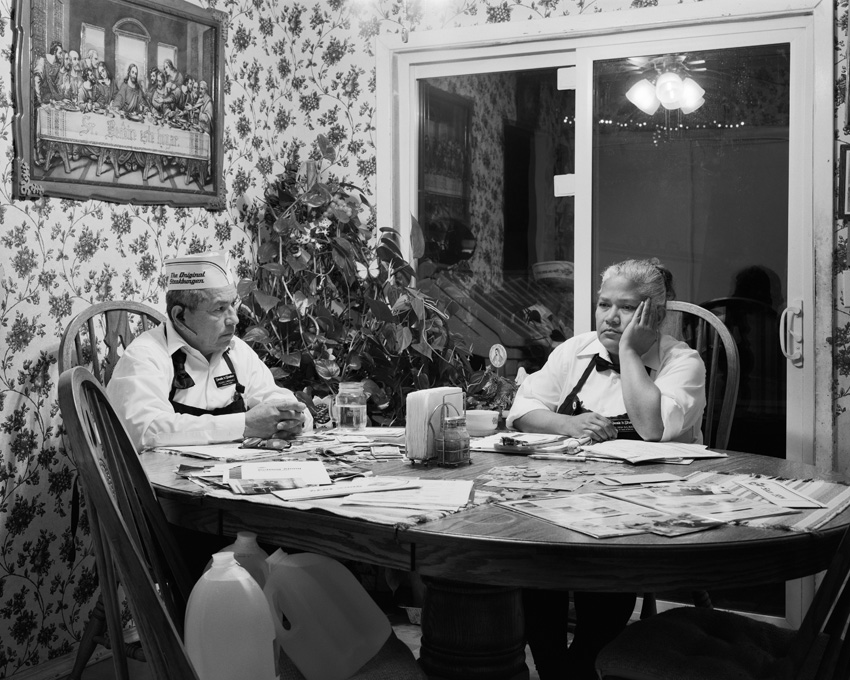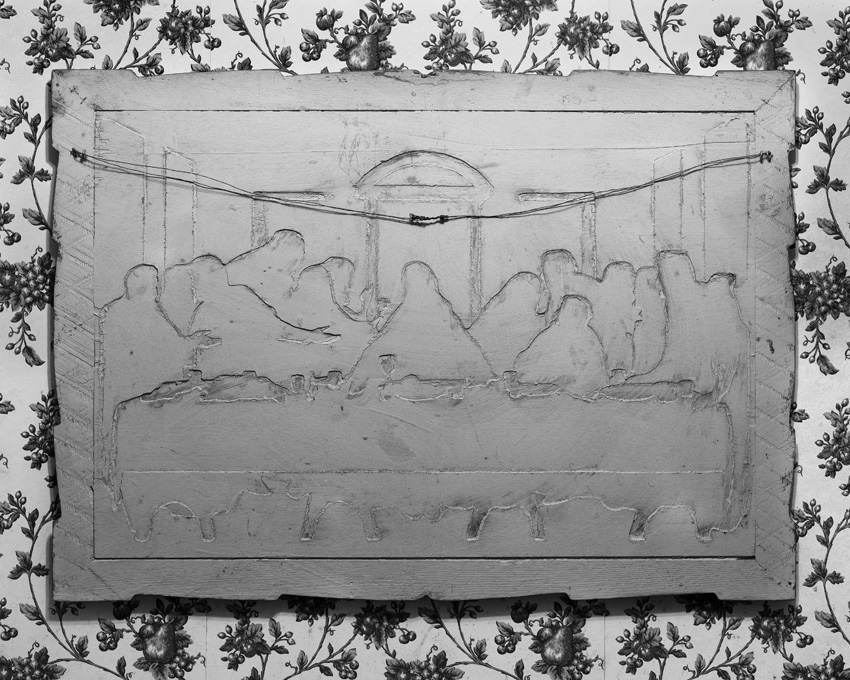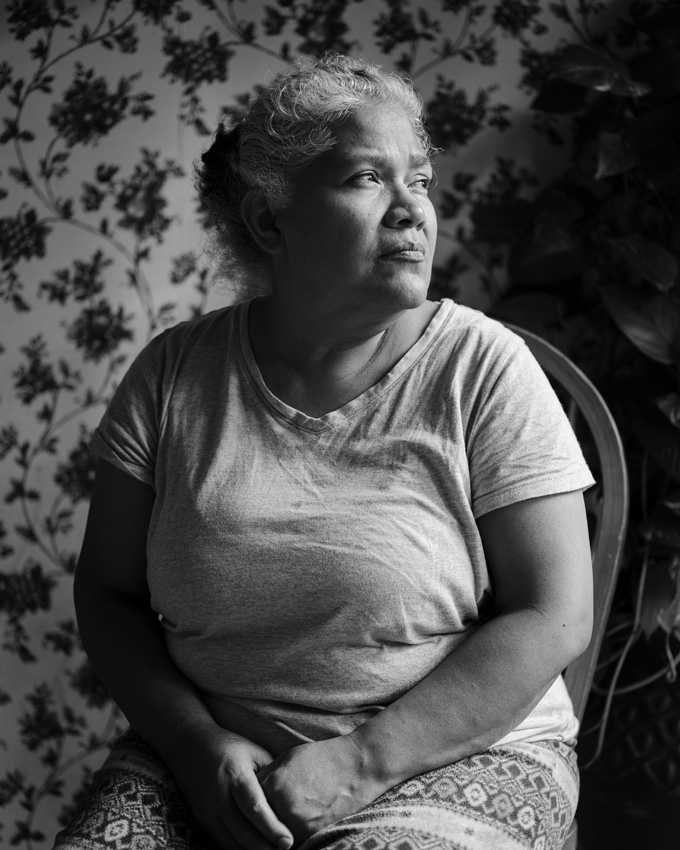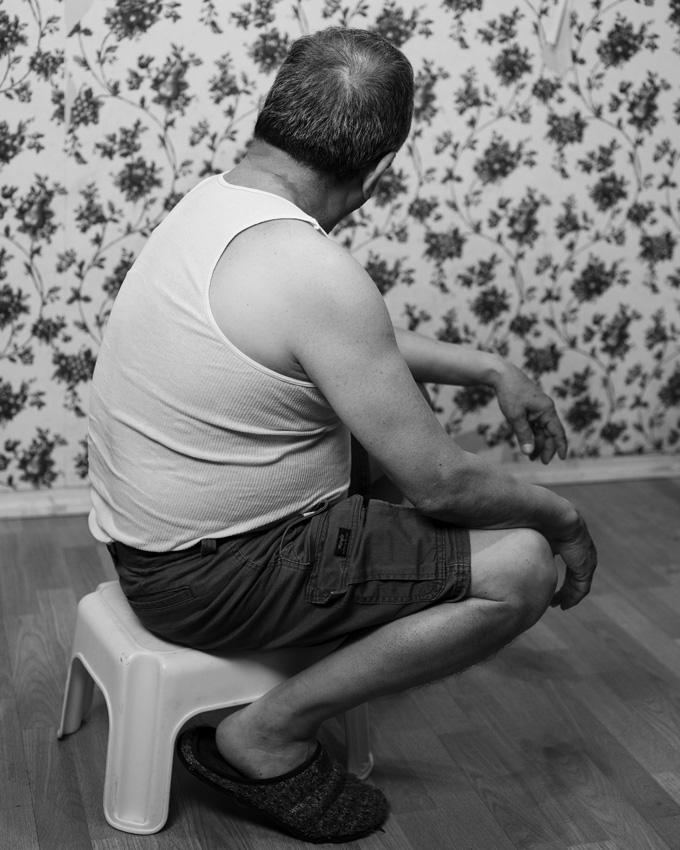'I’m interested in exploring what can and cannot be seen': Brayan Enriquez
A recent graduate from the Ernest G. Welch School of Art and Design at Georgia State University, Brayan tells us about his approach to photography, the shortlisted project and future plans in this in-depth interview.

© Brayan Enriquez, United States, Shortlist, Student Competition, Sony World Photography Awards 2024
Can we start with the title of your project And Taste the Dirt Below? Where did it come from?
The title came very suddenly to me, to be honest. It has to do with the stories that my parents told me about their immigration to the US and their interactions with the land during this time. For example, my father often talks about this moment of laying flat on his belly to hide from an ICE officer, literally a few feet away. My mother talks about trekking through the mud in the Arizona desert. The idea of tasting the dirt comes from these stories about their interactions with the land; almost succumbing to the land. It's a very intense word, ‘taste’. But immigrating to a new country is intense too.
The series is made of photographs of not just people but also objects like social security cards. Why photograph objects to tell your family story?
I've been photographing my family for a very long time. So now, when I approach photography, I think about how I can photograph the thing without photographing the thing. How can I photograph my parents without always displaying them? Because that kind of representation can get very boring, both for the audience and myself.
I walk around my childhood home for countless hours, just looking around and investigating, because there's always some stone unturned; there's always something that my parents have failed to mention. That’s how I've been led to all these objects in my photographs, all these materials from my family archive that my parents have held onto for years.
The objects help me think about what I can and cannot show. I also think about them in relation to time. A lot of the time, I'm referencing the past that is unseeable, my family history that I cannot see, except through these objects. I’m interested in exploring what can and cannot be seen, what can and cannot be photographed. In this way, I feel like a scanner sometimes when I am photographing.

© Brayan Enriquez, United States, Shortlist, Student Competition, Sony World Photography Awards 2024
Why did you shoot the series in Black & White?
The biggest reason why I chose to shoot And Taste the Dirt Below in Black & White is to take a step back and really see what I was photographing. My family is very immediate to me; I see them every day. And so when I began this project, I quickly realised I needed a way to create some distance. Black & White created a very immediate distortion and allowed me to really see these things in a new way. And I think that’s why I photograph in the way I do: it's because I need layers of distortion.
How did you begin photographing?
My father introduced me to photography early on when I was twelve or thirteen. He used to write for a Spanish language publication and would take me around to community events as his photographer. These events were catered to the Latino community in Georgia, specifically to the undocumented community, where they’d provide healthcare and other needed resources. I was just too young to enjoy these experiences at the time, but I look back on those times very fondly. Those experiences of making really documentary photographs and interviewing people, have also really influenced the kind of work that I'm interested in making now.
'A lot of the time, I'm referencing the past that is unseeable, my family history that I cannot see, except through these objects. I’m interested in exploring what can and cannot be seen, what can and cannot be photographed.'
What was the first photograph you took for yourself?
When I was younger, I didn't have cable or things like that, and so I'd spend a lot of my time outside. My friends and I would explore this forest near my house, going deeper and deeper every time. One time, we came across a really clean bench in the middle of the forest that I was fascinated by. So I decided to come back to the spot later with my older sister and little brother to find the bench again and photograph it. It was a very collaborative process actually; I would hand my sister the camera sometimes and she would also be photographing. So, I don’t even know who took which photographs, and recently I’ve found myself wanting my work to return to that type of collaboration
How did your relationship with photography evolve since then?
Ever since that moment, photography has just stuck around. I remember being fascinated by the aesthetic of images on Tumblr and wanting to participate in that kind of picture-making, which slowly faded out. I went to college to study film since cameras were the only things I knew about at that point. But eventually, I got to a point where I had these images in my head, but I didn't have the skill set to make them. So I took a class in photography, and my entire world opened up. I realised what a photograph can be, that you can communicate ideas through the medium. I was wholly changed. I ended up switching my major to photography and I've stuck with it ever since.
When I look back now, I realise that, even then, I was always photographing my family. I had just gone back to living with my family while I was doing that initial photography class because of COVID, and I ended up making a project about them. I later began photographing my mother a lot and thinking about her experiences as not just a mother, but also an immigrant mother. When she holds her grandson, for example, it’s a very specific experience for her; her own son wasn’t held by his grandmother. I haven't seen my grandmother since I was two years old because she was deported. It was that intersectionality that led me to make And Taste the Dirt Below.

© Brayan Enriquez, United States, Shortlist, Student Competition, Sony World Photography Awards 2024
Did photography make you see your family differently?
I don't know if it made me see them differently. It was more that it helped me be more honest about my place in the world and my parents’ place in my life. The thing with having immigrant parents is that sometimes family history can fade or cease to exist because of embarrassment or fear. But I hope that, through this project, I have shown that it doesn’t have to be the case, and I hope that other people can begin to ask the same questions about where they come from.
I should also say that, more and more, it’s not just that my family is in front of the camera, but they actively participate in making the photographs. It’s not just me documenting them, but a collaborative process.
Can you share your experience of being shortlisted for the 2024 Sony World Photography Awards Student competition?
As a photographer, it’s extremely validating to be recognised. You spend so much time applying to various places and feeling very vulnerable that it's great to be recognised. I think I was the only student from my university who actually applied, so I would say to anyone thinking about applying to definitely go for it.

© Brayan Enriquez, United States, Shortlist, Student Competition, Sony World Photography Awards 2024
How have things evolved since you submitted the series, and what’s coming next?
Probably the most exciting update is that I recently won a grant that will allow me to travel to Mexico where I'm hoping to photograph my extended family who have not been able to travel to the US for many reasons. My mother’s side lives in Acapulco on the Western coast and my father’s in Tampico on the Eastern coast. I have yet to meet the majority of my extended family, so I’m excited to connect with them and make photographs with them.
What would be your dream project?
I'm blessed because I think I'm doing my dream project right now.
The 2025 Sony World Photography Awards Student competition is open for entries till 29 November 2024.







